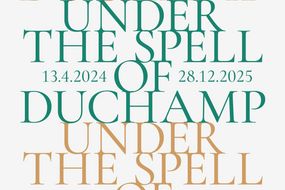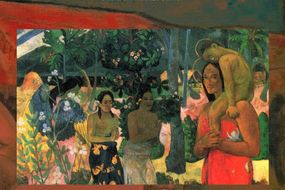From 10 April to 20 July 2022
Born in Siena in 1883 and died in Rome in 1920 , Federigo Tozzi is today recognized as one of the greatest Italian storytellers of the early twentieth century: his short stories and novels ( With closed eyes , Three crosses and Il podere , in particular) stand out for themes and originality of style on the literary panorama of those years, and are now part of the literary culture of European modernism.
Less well known are instead the activity of art critic and, more generally, Tozzi's interest in painting, sculpture and illustration of his time. An interest born in the classrooms of the Art Institute of Siena and then nourished, over the years, by relationships of sincere friendship with the sculptor Patrizio Fracassi (who committed suicide at twenty-eight in 1903) and, again in the Sienese period, with the engravers Ferruccio Pasqui and above all, with Gino Barbieri, a Cesena pupil of Adolfo de Carolis, great master of the new Italian woodcut and illustrator of d'Annunzio. During the Sienese years, he also met Lorenzo Viani, whom he would meet again years later in Rome.
And it is precisely in the capital, where he moved in 1914, that Tozzi's figurative culture opens up to "secessionist" and expressionist languages, to come to hypothesize, in recent years, an early "return to order". In the review of the important youth art exhibition at the Casina del Pincio in 1918, he demonstrates extraordinary critical skills and a precise knowledge of the artistic situation of the capital in commenting on the works of Armando Spadini, Pasquarosa, Ferruccio Ferrazzi, Attilio Selva, Cipriano Efisio Oppo, Carlo Socrate, Deiva De Angelis, Leonetta Cecchi Pieraccini and Alfredo Biagini. Other articles, on the other hand, have a monographic nature, and testify to an evident consonance, in terms of themes and languages, with the artists treated, from Fracassi to Barbieri, from Viani to Ercole Drei.
A chapter in itself, of great interest and completely unknown even to specialists, is the one that binds Tozzi to an almost forgotten publishing practice: that of book and periodical illustration. Already in the nineteenth century, great writers such as Manzoni and Verga had printed illustrated editions of their works created in close collaboration with prominent artists, and in the early twentieth century this custom not only continued but also extended to periodical publishing. Thus, if in 1913, after having participated in the experience of the magazine "L'Eroica", Tozzi publishes the poem The city of the Virgin with the engravings of Barbieri and Pasqui, in the Roman years it will instead be Tommaso Cascella, Cipriano Efisio Oppo, Attilio Selva and Bepi Fabiano, among others, to illustrate the short prose and short stories that the writer was publishing in the most important magazines of the time.

Piazza Duomo, 1, Siena, Italy
Opening hours
| opens - closes | last entry | |
| monday | 10:00 - 17:00 | |
| tuesday | Closed now | |
| wednesday | 10:00 - 17:00 | |
| thursday | 10:00 - 17:00 | |
| friday | 10:00 - 17:00 | |
| saturday | 10:00 - 19:00 | |
| sunday | 10:00 - 19:00 |

From 13 April to 28 December 2025
Under the Spell of Duchamp

Antonio Dalle Nogare Foundation, Bolzano

From 25 October to 25 January 2026
The three greats of Spain: three visions, one legacy

Steam factory, Milan

From 6 September to 25 January 2026
Gauguin

Historical Museum of Infantry, Rome

Artsupp Card: museum + exhibitions 10.00 €